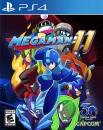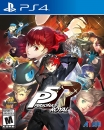First off, this isn't a debate thread. GaaS is a relatively new term, so I don't think there's any right or wrong answer for defining it. I just want to know what you personally define GaaS as, and what, if any GaaS games you consider to be good or bad.
GaaS stands for Games as a Service. That's in contrast to Games as a Product. With Games as a Product you pay once for a complete product, and then maybe pay a few additional times for accessory products (DLC). The basic idea behind GaaS is to get your playerbase to constantly fork over money for the game, kinda like paying a utility. Because of this, I would say, any game that expects regular influxes of cash from its playerbase, post initial purchase, to be GaaS. Technically, Animal Crossing is a GaaS game, because it expects its playerbase to pay for Nintendo Online post initial purchase. The line between GaaS and GaaP can get pretty blurry though. If a company puts out four sets of DLC for their game a year is that now GaaS? Or did they just make four accessory products for their game?
I think a good answer to this question is to say that GaaS is a spectrum. At one end of the Spectrum we have games that only expect you to pay a small fee to play online, but are mostly a one time purchase. In the middle of the spectrum we have fighting games like Smash Ultimate, or DBFighterZ. These games put out somewhat frequent character DLCs, and expect people to pay for online. At the far end of the spectrum we have games like Destiny, Fortnite, Anthem, Gears 5 and Genshin Impact. These games have almost constant drops of micro-dlc, that are overly expensive. They weaponize FOMO and/or use other psychological hooks to get their playerbase to constantly play. Games on this far end of the spectrum are a lot like collectible card games, in that they expect their players to dedicate all their time and money to them. Games on the opposite end of the spectrum are like one time board game purchases.
Personally, I think the closer a game is to the GaaP end of the spectrum, the better a game it is. Games on this end of the spectrum are a much better bang for your buck. Games on the far end of the GaaS spectrum wind up costing their players far too much time and money in the long run.
Finally, I'd like to point out that not all GaaS games have MTX. One of the first games to come out on the far end of the GaaS Spectrum was World of Warcraft. With WoW you just had to pay a monthly fee after initial purchase.
As for what GaaS games are good or bad? I think Animal Crossing, Smash, and even WoW are examples of GaaS done right. I think Destiny, Fortnite, and MK11 are far too predatory for their own good.
P.S. I'm predicting that Halo Infinite, and TLoU Multiplayer Edition will both be games that lean heavily into the GaaS end of the spectrum. Not only that, but they will both be bad games.






















































